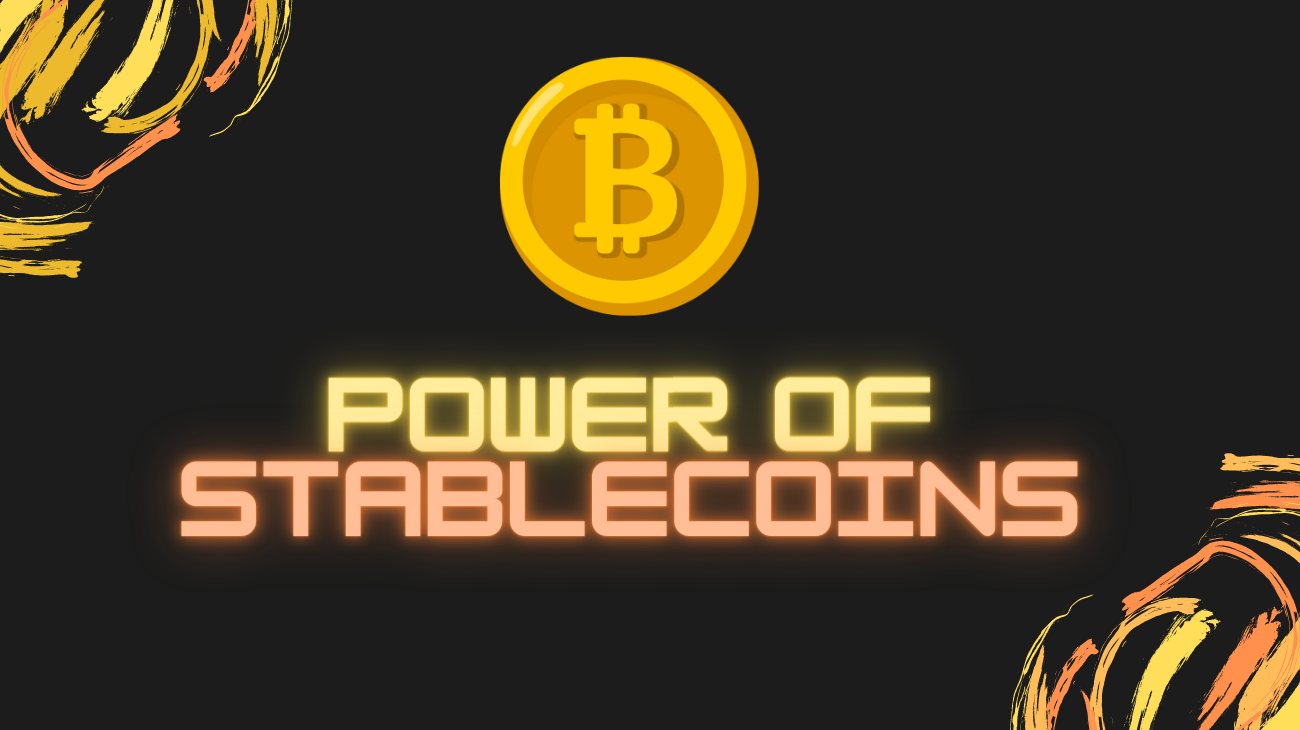The Power of Stablecoins

Do you get the sense sometimes that ideas that have been floating in your head suddenly clicks into place? Things that didn't make any sense before is now so obvious? I woke up this morning with this feeling because I had a brilliant idea that I didn't think about before.
Why would anyone need to keep any cash in the bank?
I have been stuck for some time on this topic because as a sensible adult, I keep some cash in the bank in case of "emergency". This cash at the best of times is earning me 0.7% interest rate, which can only be unlocked if I deposit more every month, make 5 or more transactions and open yet another account separate to my daily spending account, and at the worst of times, 0% interest. Yes, if you don't do all the things the almighty banks say, you get nothing. I mean, I really could've used a couple of extra dollars in interest (#sarcasm and rant over).
Parking the emergency cash in cryptocurrency
It never occurred to me that I can do this. Crypto is so volatile that my emergency budget could be worth nothing one day to the next and it would be devastating if that's when I needed it. What didn't click for me was that there is this thing called "Stablecoins" which is essentially a type of cryptocurrency that has its value pegged to an outside asset like a fiat currency (U.S. dollar) to stablise the price. This means that more or less the value of the Stablecoin should not move. The biggest Stablecoin by market cap is Tether (USDT), followed by USD Coin (USDC) and Binance USD (BUSD)

Given the lack of volatility in Stablecoins, I have a higher degree of comfort parking my emergency cash and not have to worry about the fluctuations in price if/when I have to withdraw this money.
Make Stablecoins Work for You
Now getting to the juicier part of what I realised when my brain finally clicked. I can deposit my Stablecoins in a "savings" account on a centralised finance platform like Celsius or Blockfi who would on-lend my coins to give me an interest return. There are probably also Decentralised Finance platforms that do this but I won't detail that in this post, the difference between Defi and Cefi is that Defi essentially cuts out the middle-man in this case.
According to Staking Rewards, you can expect the below range of rewards for staking your Stablecoins:

Due to my love for Binance, I've researched the following platforms and their yields for the Binance USD Stablecoin.
Blockfi: https://blockfi.com/crypto-interest-account/ :
8.6% APY on BUSD, compounded monthly.
withdraw at any time.
one free crypto and one free stablecoin withdrawal per month, further withdrawals have fees.
interest can be paid in a different currency than the holding (flex).
Celsius, https://celsius.network/earn-rewards-on-your-crypto/ :
10% APY or 12.65% APY for rewards in CEL, paid weekly.
earn in kind or in CEL.
no fees.
withdraw at any time but 24 hour lockup on first withdrawal.
Nexo, https://nexo.io/earn-fiat :
10-12% APR, credited and compounded daily. They also have high savings options for fiat as well. Unfortunately, nothing for BUSD.
highest interest only if you stake 10% Nexo tokens.
earn in kind or in Nexo.
free to withdraw at any time.
zero fees.
dividends paid on Nexo.
There are also other platforms like crypto.com, Gemini, Ledn, etc that offers various high interest savings products for different Stablecoins.
This Seems Too Good to be True - What Are the Risks?
I was quite skeptical about the idea to turn my fiat cash into a Stablecoin to earn anywhere from 8-12% APY whilst having the ability to turn this Stablecoin back to fiat if I needed to use it. This is way better than keeping the cash in a bank account which practically loses value over time due to inflation. In the normal world, higher return means higher risk. So what's the catch? Well from my preliminary research, every Stablecoin is different so they need to be assessed on their own merits.
Risk 1: Nature of the Stablecoin - how can I be sure I can redeem 1 Stablecoin for 1 fiat in the end?
What gave me some comfort around BUSD is that it is:
Approved and regulated by the New York State Department of Financial Services
100% backed by U.S. dollars held in FDIC-insured U.S. banks: this means 1 BUSD = $1 USD held in escrow
Audited monthly
Made in partnership with Binance, one of the largest exchanges in the world
Risk 2: Counter-party risk - how can I be sure that I can redeem my Stablecoin?
When it comes to counter-party risk, most crypto OGs probably have PTSD from the Mt. Gox hack. And so they should. If you're not familiar, Mt. Gox lost about 850,000 BTC when they were operating as one of the largest crypto exchanges in the world during that time. I would like to think the crypto space has evolved a lot since then, and even more so learnt that security is one of the highest priorities when it comes to safe keeping of other people's assets.
From my initial research, yield comes from lending liquidity to market makers who arbitrage/short different crypto markets. These loans are usually over collateralised to about 50% Loan-To-Value ratio, which means you need have to provide 2 x as much as the amount you want to borrow. If the loans come within a given % of the loan value they get liquidated and the value gets returned to you with no loss taken. In the traditional market, you can borrow from 50% - 80% and sometimes 90% of the LTV when purchasing a home. If the borrower fails to pay back the loan, the house gets sold, and we all know how that went.
Since there is no insurance against these assets like in traditional finance, you really have to evaluate the counter-party before diving head first.
There are some questions you need to ask:
Does the platform offer some sort of insurance? (Celsius is looking at releasing something towards end of 2021 in this regard for example)
What is their track record? How long have they operated? How did they get through crypto market crashes in the past?
How good are their security measures against hacks? This might be hard to find but you might get some feel from using their platform, who are their capital partners etc.
How are they earning money that gives you double digit returns for Stablecoins?
Obviously, I'm no expert in this, so do your own research and answer the above before your convert all your emergency savings from cash to Stablecoins to earn the higher interest. There is a level of risk tolerance at play here and unlike traditional banking system, where your funds are largely insured (in Australia up to $250K), this might not be the case for some of these lending platforms. However, I do think that some of these risks are overstated and currently there is a higher rate of return for the same level of risk in traditional markets. Besides, leaving cash in fiat is just asking for a gradual but most certain reduction in purchasing power.
What are your thoughts on stablecoins? Do you lend them out on Cefi or Defi platforms? Do you think the risk adjusted returns are justified? Let me know in the comments below.
Affiliate Links:
Publish0x - Earn free crypto from reading and writing content
Hive / LeoFinance - Earn crypto from blockchain blogging platform
Read.Cash - Earn Bitcoin Cash from blogging
Binance.com - Get 10% trading fee commission
Coinbase - US$10 if you trade more than $100 within 180 days
Blockfi - Get US$10 BTC for depositing $100 or more into your account
Celsius - Get US$40 BTC for depositing $400 or more into your account
My Socials
Publish0x | Read.Cash | Noise.Cash @invest0x
LeoFinance | HIVE @invest0x23

